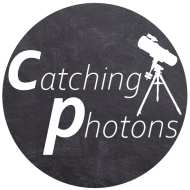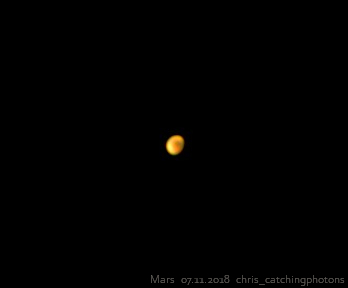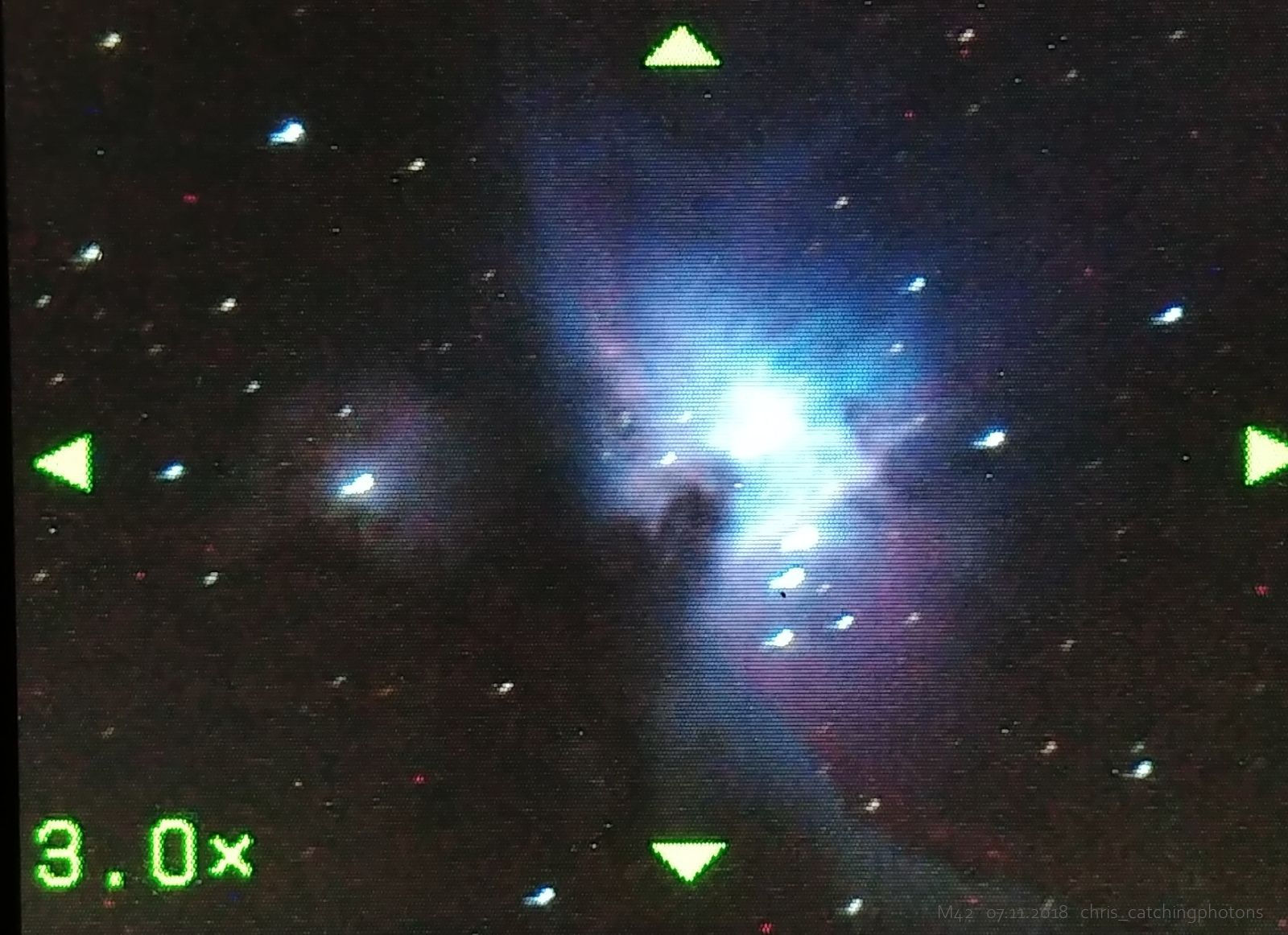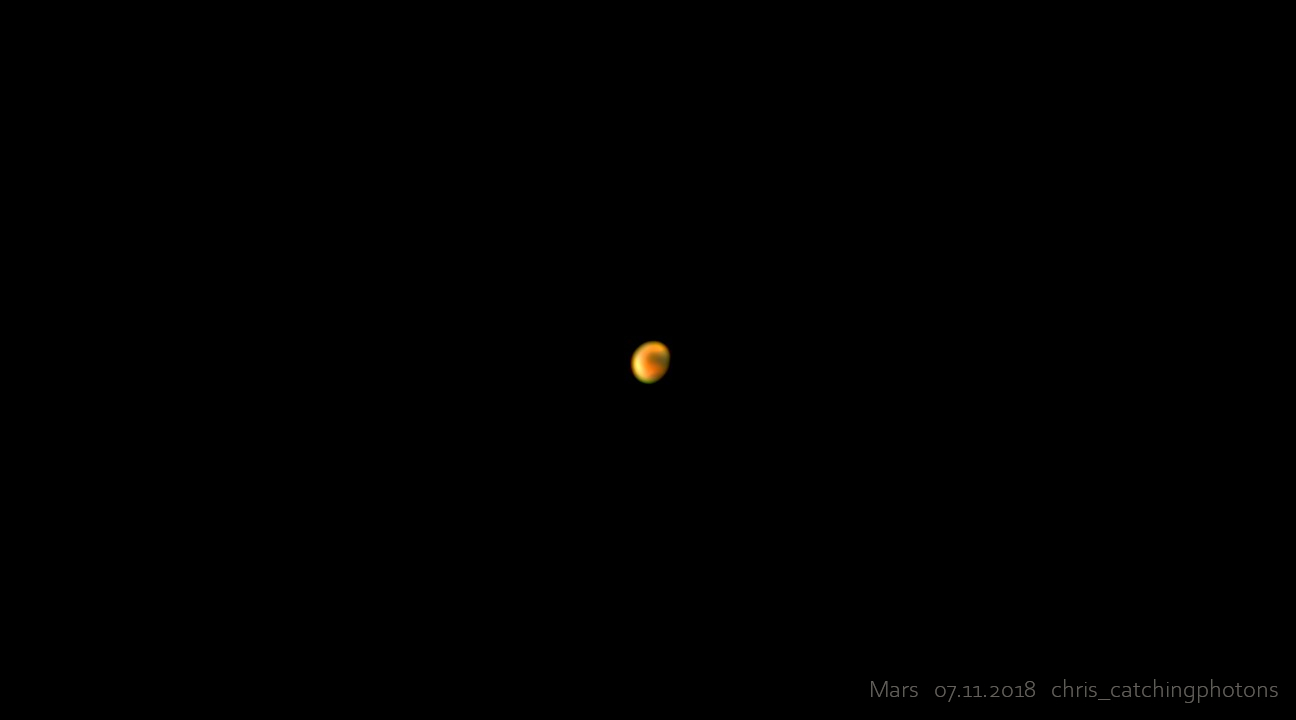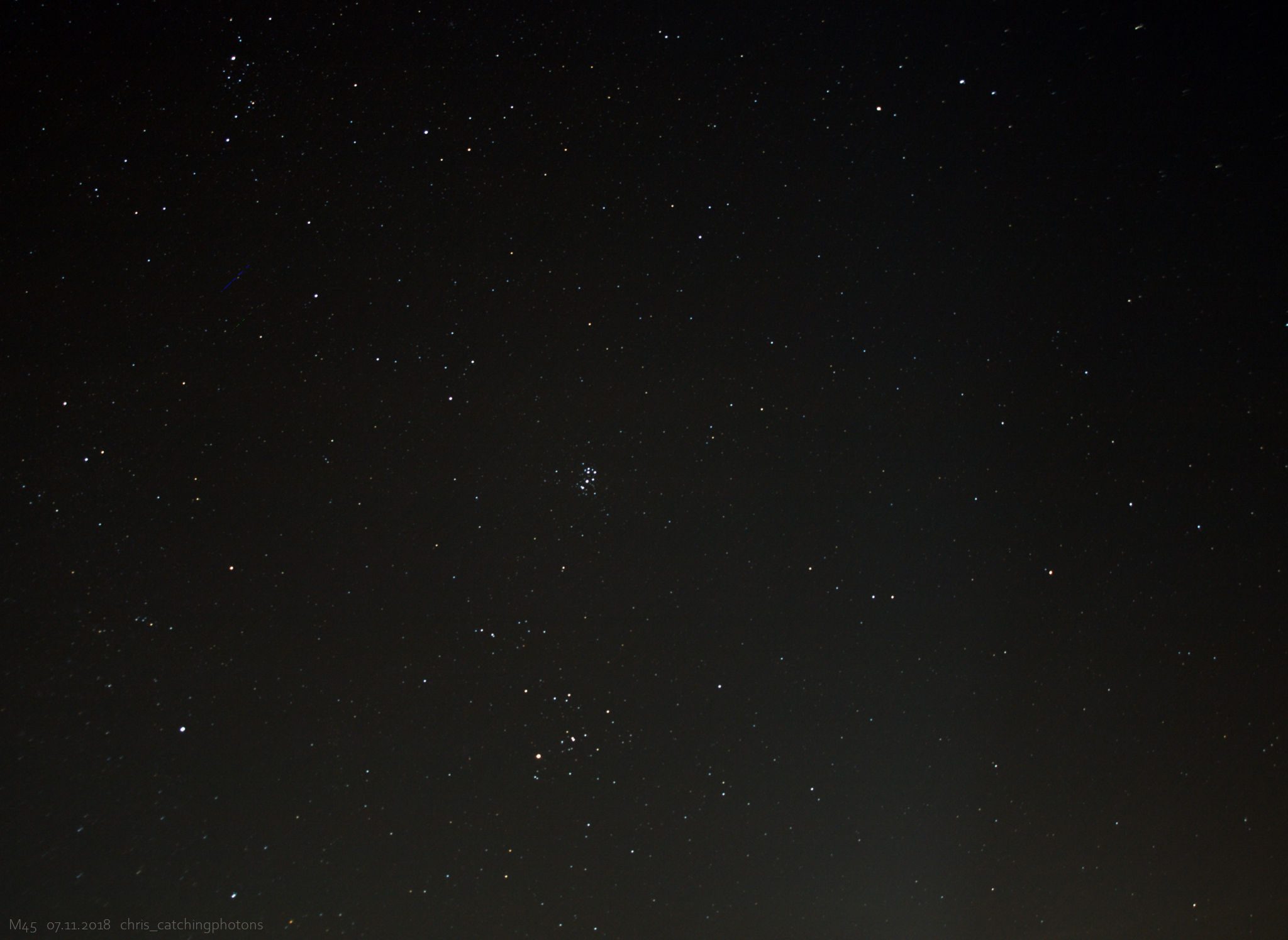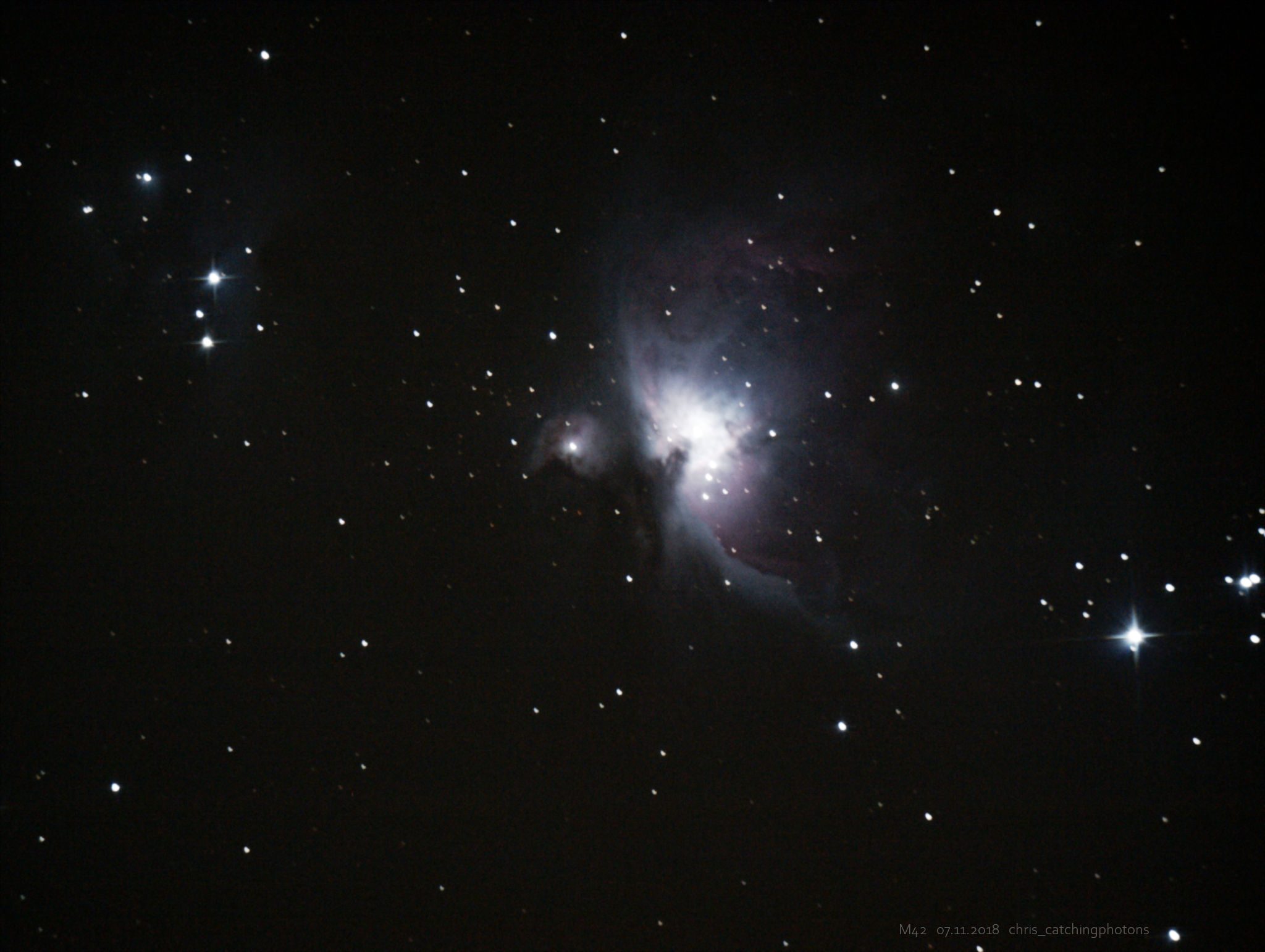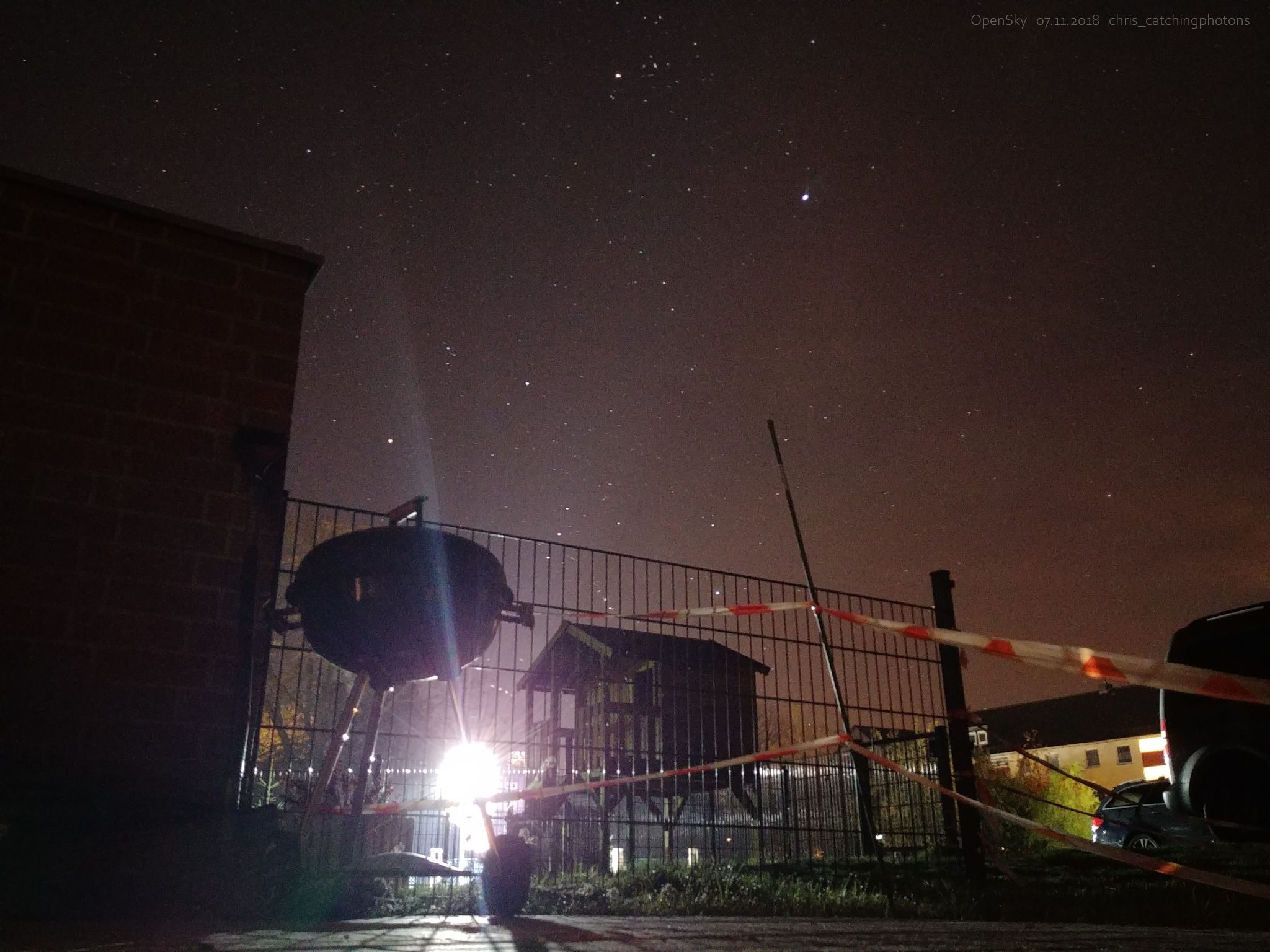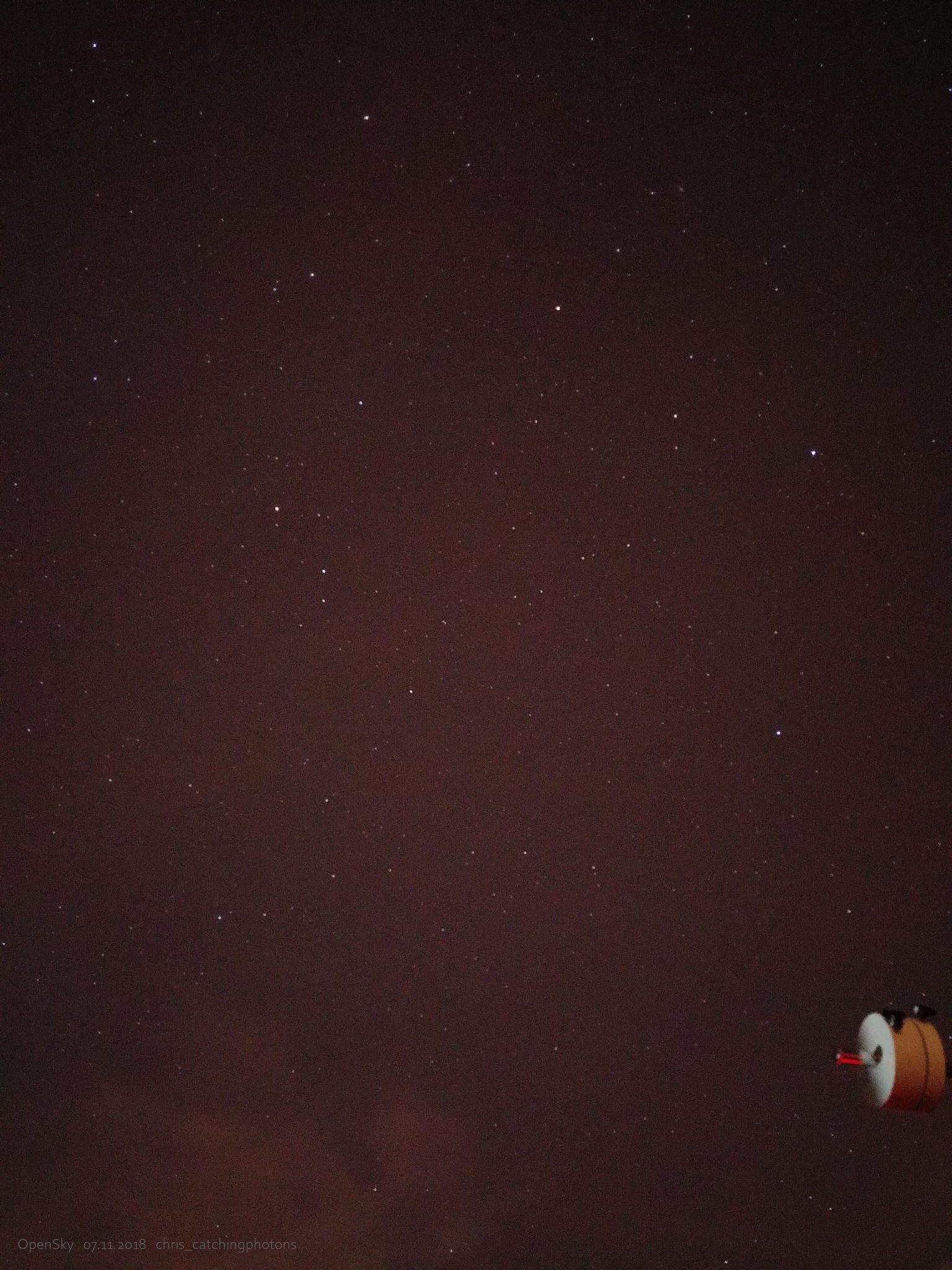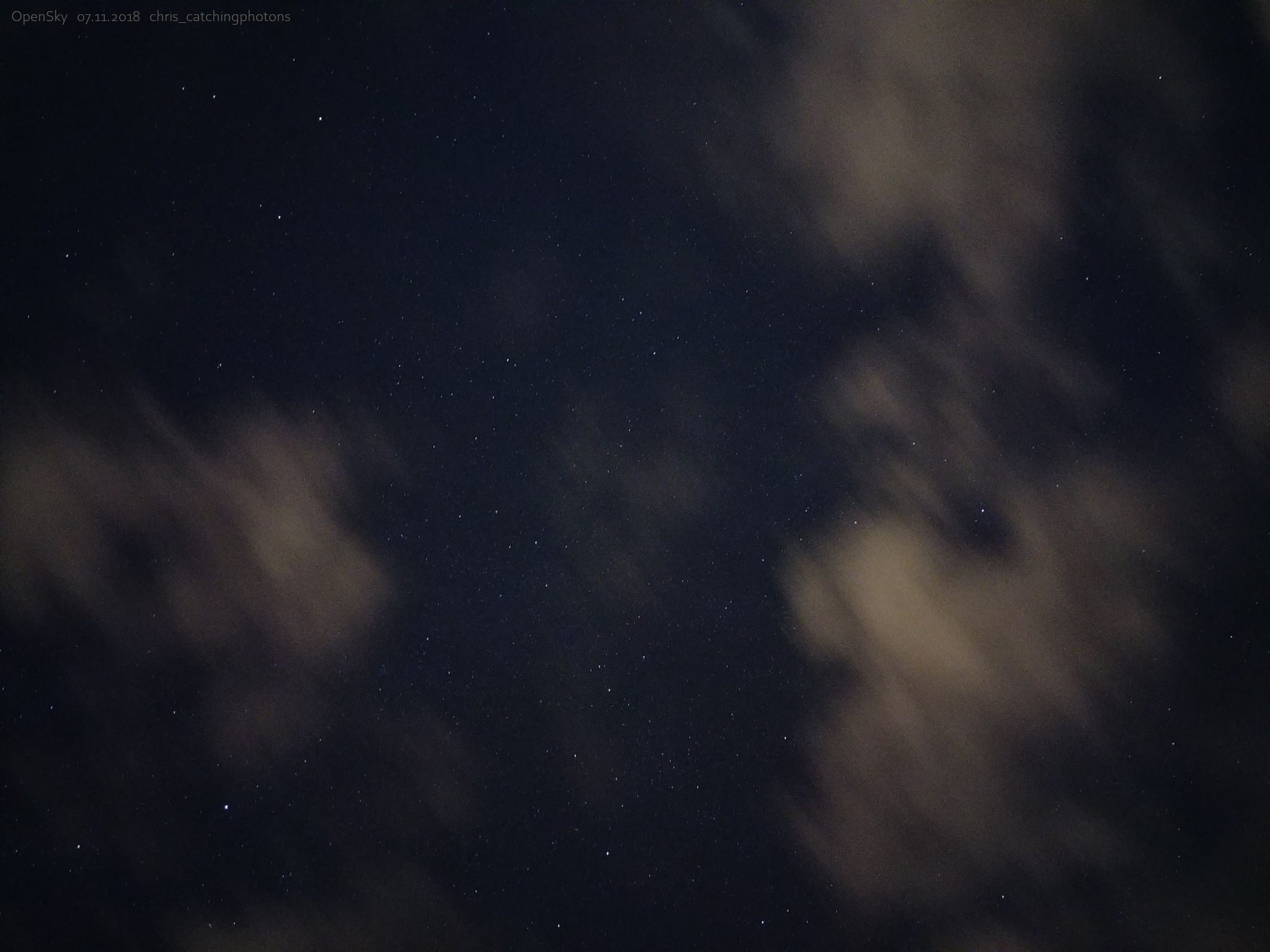07.11.2018
New aspects: First use of modded Logitech webcam – Fist stacking of unguided DSLR shots
Acquisition:
Mars: After fiddling around with the old Canon compact camera “PowerShot SX240 HS” held in front of my eyepieces I ordered a cheap Logitech webcam and modded it for the purpose of using it as an astro camera. The modification was quite simple: I removed the lens in front of the sensor and turned off the status LED. Then I glued an old film roll casing in front of the webcam. This casing happened to have exactly the same diameter as the 1 1/4” eyepieces (accident?). So with the help of “Sharpcap” and the drivers from Logitech I was able to grab a short .avi video of Mars with the camera in prime focus. I tried about ten videos with different exposure and gain settings refocusing between each videos. With the webcam and its drivers I got about 30 fps witch is not too bad for this modded equipment. On the SharpCap screen I could see Mars as a reddish disk wobbling around, showing me the bad seeing conditions. Nevertheless I actually could see some darker areas on the surface just by looking at the unstacked video files. A new area!
Pleiades: While I was busy with my webcam I set up my old Olympus E510 DSLR on a small unguided tripod facing the Pleiades. With the 1/400 rule in mind I chose 10 seconds for my shots as I used my camera with the kit lens at 14mm focal length. Shooting at ISO 400 I took 30 light frames and around 10 dark frames.
M42 – The Orion Nebula: After a while I ended the Mars/ Pleiades session. Looking east I saw Orion rise above the horizon. I couldn’t resist to attach the Olympus E510 to my Skywatcher 750/150 Newtonian and pointed it towards that nebula. I chose 120’ light frames and took a few test shots. As it was late (LATE!) in the night, I only took five lights and ten dark frames. The first impression on the screen of my DSLR blew me away. M42 is no dark or hidden target. It shines from the heavens and waits to be captured! It was amazing. Till now the screen had only shown dark or dim objects that needed heavy stretching of the data to show their beauty. M42 is different! Taken away by that target I saw M33 on my Stellarium – App and slew towards it.
M33 – Triangulum Galaxy: M33 was unexpectedly dimmer than M42. Just barley visible on a single frame it was quite a fiddling to frame it in the centre. But after 21 light frames I gave up, packed my stuff and went to bed.
Processing:
Mars: Processing Mars was a totally new thing. Before this evening I had always captured Planets using the old Canon PowerShot SX240 HS in front of an eyepiece. Because the Canon can only capture videos in .mov files and AutoStakkert! has problems with .mov videos, I was forced to first convert the video file into a bunch of .jpeg images. Then I could import those images into Autostakkert and stack them. Problem is: The single .jpeg image is very large and so the stacking process tends to keep my CPU quite busy. Now I had a decent .avi file from SharpCap to work with. A higher frame rate and levelled gain settings gave me a much better basis to work with. I stacked 1,5,10 and 30% of the frames for every video. Because the seeing was not the best, I dropped the majority of the frames. I also played around with “drizzle” where Autostakkert tries to calculate additional sub pixel informations due to the movement of the object from frame to frame. Drizzling makes the final image larger without just upscaling it but holds the danger of making the image noisy if you overdo it. Adjusting gamma and cutting the histogram I ended up with two images. A drizzle-free and a 3x drizzled version. You can actually see surface details on the little red neighbour! I was stunned! And all this with a 10€ webcam from ebay.
Pleiades: Processing the Pleiades was a matter of stacking the images in DeepSkyStacker with the additional dark frames I took. After receiving the stacked result I stretched the levels in GIMP2 and that was it. You can definitely see more stars in the final version compared with one single light frame. Due to the short exposure time no nebulosity is visible. Still a nice wide field view.
M42 – Orion Nebula: Both of the ‘late night objects’ were of short exposure times. The Orion nebula had only five lights of 120 seconds. That’s nothing at all. The result, taken with my old Olympus E510 DSLR is rather noisy. I tried to brighten up some details in the clouds. In the first version I couldn’t control the noise and shifted the red channel way to high. I touched the data months later again with more ‘sensitive’ skills and an idea of noise reduction. Compare both versions if you like.
M33 – The Triangulum Galaxy: M33 got 21 x 120’ light frames so in theory it should be quite easier to process in comparison to M42 with only five. In reality M33 is quite dark! Later I read that M33 is supposed to be one of the more tricky targets on the night sky. Targets like M33 and M101 are quite big, but quite dark. In other terms: The brightness per area sky is very low. So imaging M33 requires A) longer exposures B) a dark sky C) a sensitive camera. Not one of this points was true for me so the result was… rather dim. Furthermore my polar alignment was slightly off. So star trails in many light frames were the result. So conditions could have been better and M33 remains as an object to be visited again. But nevertheless one can see the structure of the arms, some nebulosity and all in all a nice shot, given the circumstances.
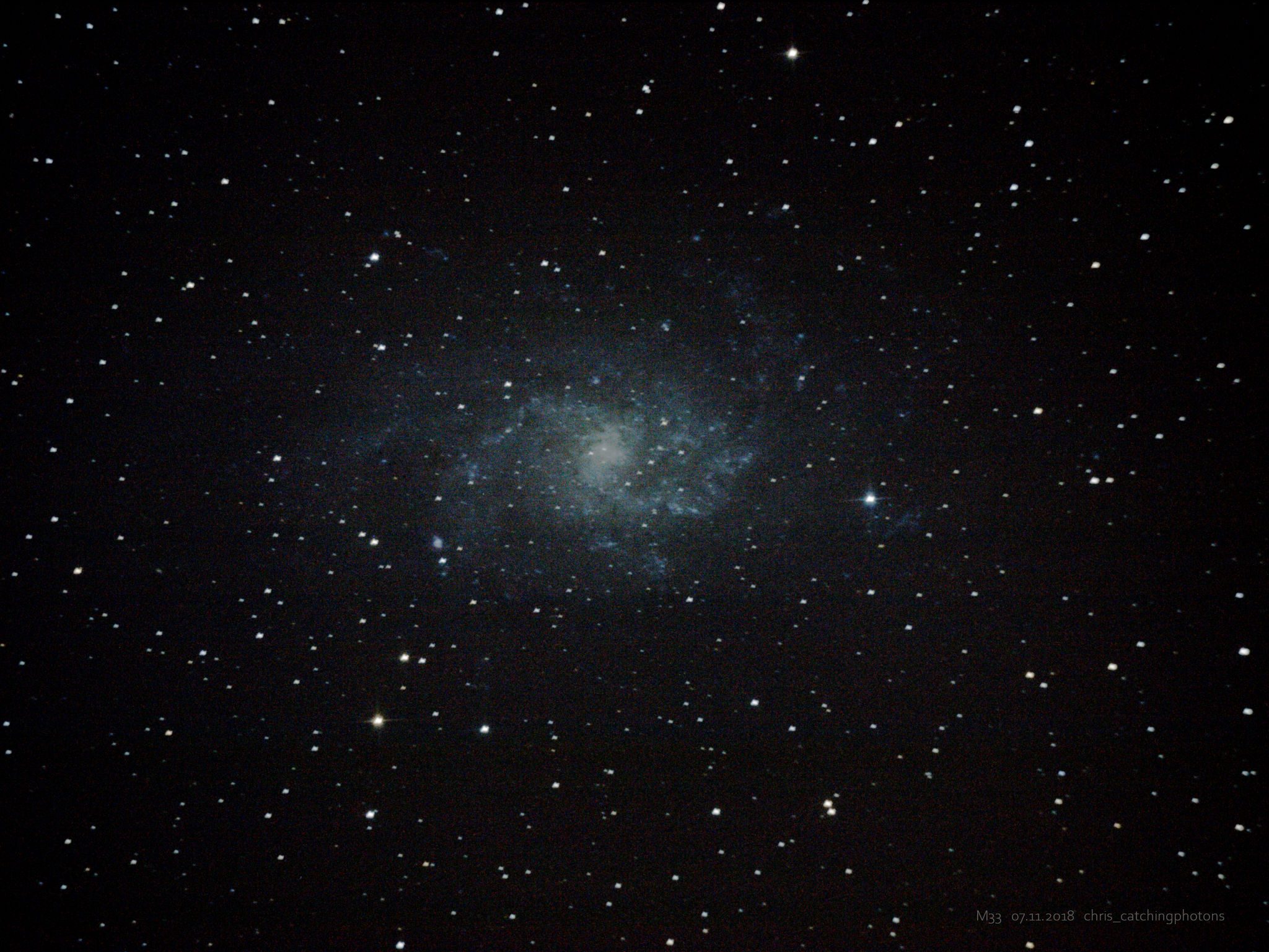
Light pollution:
In one of my last posts I wrote about light pollution and the Bortle scale. On the following pictures you can clearly see the reddish sky, the illuminated clouds and the bright LED lanterns from the neighbourhood. At least the lanterns can be switched off while I’m imaging. Red skies light domes of near by cities are a constant curse.
Conclusion:
The ‘one object a night’ rule was violated! Never the less: The first webcam image was a true success. My first details from the surface of another body in our solar system! I already managed to capture the rings in their rudimentary shape but nothing like cloud structures on Saturn itself. So Mars valleys were a real first! I liked it! Furthermore capturing planets is a pleasant alternation to DSOs. The process of acquiring the images is totally different. Short exposures and fps vs stability and long exposures. Two domains of the same hobby. But I think I will find joy in both of them. M42 and M33 truly need to be revisited. And this time I might spend a full night of data on each of them.
Greetings and clear skies,
Chris
